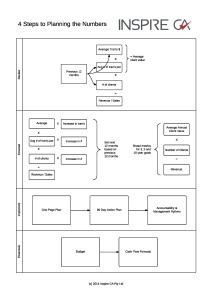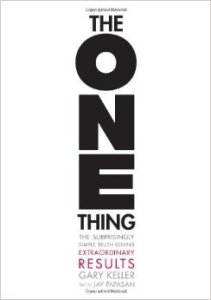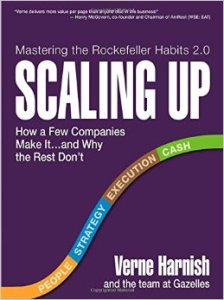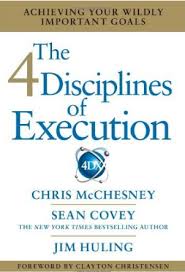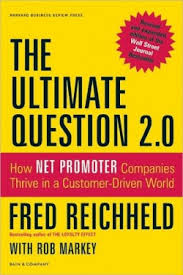Hiring Smart: How to build your team for growth
Growth it great. But not when it kills us!
When we all of a sudden have an influx of work, this stresses the team and us, as the business owner.
We often hear our clients who are experiencing rapid growth talk about their next hire. We all know that many hands make light work, and so it is a natural move forward – to find that extra pair of hands.
We find that thoughts usually steer towards coping with their current workload. For instance, hiring a part time team member to take up a little slack.
But sometimes there’s some questions to ask before mapping out the path forward:
- Does the best fit for your business generally look for a full time or permanent arrangement?
- Where will you find this person?
- Is this someone to be customer-facing and strategic – or someone focused on the operations of the business?
- How will this person work in with our current team?
As the business owner, the decision about your next hire will mean the difference between steady growth and ferocious growth.
Asking the Experts
I’ve asked two experts to share their views on your next hire:
Paul Dunn

Before moving into the role of Chairman of B1G1, Paul built and sold many super successful businesses over the years. And has made this ‘hiring for growth’ decision dozens of times.
Paul has also helped hundreds of accounting firms throughout his career create better businesses, and identify what it takes to create an awesome team!
Paul says Hire Before the Growth Hits
Paul says, “In general, you hire BEFORE the growth — you hire to create it, not to deal with it. SO that means you hire the ‘strategy’ team members who then hire the operational team and so on”.
What this means is purposefully planning capacity. Then your focus will move to filling it.
Your strategy team should help with this and build the team for you.
Alison McGrath

Alison has spent thousands of hours in interviews and consulting around these topics (and McGrath HR is also a B1G1: Business for Good partner too! You can see her impact here.).
Alison Recommends Covering all Your Bases and Hiring Slow
When building a business for rapid growth my thoughts are you need to ensure all your business functions are covered.
When working with businesses, Alison’s approach is to complete a skills gap analysis. Ideally you’re looking to identify team members who can complement existing strengths and support the weaknesses in the business.
Alison says that you need to clearly know the skills you are seeking but also know what attitude you want and what behaviours you need in that team member. She also notes to not rush the hiring process, but think it through, gathering advice and definitely carrying out the background and reference checks.
In Alison’s experience, the successful business owners are the ones that take the time to research, discuss, reflect then document their staff requirements. They list essential skills and desired skills, and follow a plan around the hiring to fit their growth.
The task of hiring is so important – get it right and you will reap the rewards, get it wrong and it could turn disastrous.
Chewing the Fat: When are Meals Tax Deductible to a Business
Taking team members, clients and suppliers out for a meal can be an opportunity to start, or further develop, a great working relationship.
Many small business owners even choose to cover the cost of such an outing. However, how can you be sure this is a legitimate business expense?
You’re building a relationship that will, at least in your opinion, help your business earn more money in the long run. So why wouldn’t the cost of that be tax deductible?
Unfortunately many of these expenses are not deductible and working out which ones are is more complex than most business owners would like.
To help you navigate the minefield and make an informed decision when it comes to claiming meal related expenses, we have developed a simple ‘cheat sheet’ to walk you through the various possibilities.
What meals you CAN claim as a tax deduction
1. You can claim meals when you’re travelling
When employees travel for work and stay overnight in a location that is not their home, they are entitled to claim reasonable amounts for meal expenses.
If an employee has a meal in a restaurant while travelling for work purposes the expense is tax deductible and exempt from fringe benefits tax.
When making your claim you should consider what the ATO determines to be ‘reasonable’ in any given tax year which can be found in their annual update.
For the 2015 financial year, the amount is generally between $102 to $121 per day.
2. You can claim meals supplied as a working lunch
If an employer provides sandwiches and drinks for a working lunch or dinner in the office, the amounts are tax deductible and exempt from FBT.
However, if this meal is more elaborate and includes wine, the meal deduction is likely to err on the side of entertainment and be disallowed by the ATO.
Shouting the team pizza over a training session is A-OK. Trying to claim the in-house Christmas Party is not.
3. You can claim meals supplied from an in-house café or canteen
If the employer has an in-house café or canteen, and provides meals to employees during the working day, the expenses are tax deductible and exempt from FBT.
Please note that if the employee pays for the meal and is not reimbursed by their employer the amount is not tax deductible to the employee as it is considered to be a private expense.
4. You can claim snacks and refreshments throughout the day
As a business owner, you might often be out and about and stop in for a coffee and a muffin in between client meetings.
Again, should these expenses not be a 7 course degustation, then the ATO are willing to allow the deduction.
The “Thick” of it, for those who want a bit more detail
General considerations
Usually when an expense is incurred in running a business, or in the course of earning your income, we assume the amount is deductible unless some special tax rule specifically denies the deduction.
With meal expenses, I would encourage you to approach the situation from the opposite perspective. Assume the amount is not deductible unless, after working through the following list of questions, you can clearly establish that it is a legitimate business expense.
Who consumed the meals?
It is necessary to split meals purchased for staff and meals purchased for customer, suppliers and other business associates.
While the expenses may be deductible if provided to an employee (see later steps) meals and other entertainment provided to non-employees are not deductible.
Who paid for the meal?
As with all tax deductions you need to ‘pay to play’.
The person (or business) that pays for the meal is the one claiming the deduction. If an employee pays for the meal and their employer reimburses them for the expense it is the employer that will seek to claim a deduction for the item.
Have you paid Fringe Benefit Tax?
If you have supplied meals or other entertainment to an employee and subsequently reported these amounts as a fringe benefit AND paid the appropriate amount of fringe benefits tax (FBT) on them, then the amounts can be claimed as a deduction.
It is important to remember that fringe benefits tax is levied at the top marginal tax rate which is much higher than the benefit achieved from the deduction in most cases.
We can look to use the available FBT exemption for some assistance here. For example the Minor and Infrequent FBT exemption, which allows you to provide minor (less than $300 per employee) and is infrequently (not regular) meal benefits to employees without paying FBT while still claiming a tax deduction.
The ATO has not given a clear definition of what they consider to be infrequent or irregular they have gone as far as to say the more often and regularly benefits are provided, the less likely an employer will satisfy this criterion.
What type of meal was purchased and why was it purchased?
The type of food and drink purchased can be relevant in determining its deductibility.
The more expensive and elaborate the items purchased the less likely they are to be deductible.
We also need to consider why the meal was purchased. Was the intention to provide entertainment or sustenance?
Essentially what this means is that a sandwich and a can of drink provided to an employee as sustenance while working is far more likely to be an allowable deduction than a five course meal at the best restaurant in town on Friday night after work, which is clearly entertainment.
When and where was the meal consumed?
The final important consideration is where and when was the meal purchased and consumed?
During work hours or after hours? In your place of work/business or elsewhere?
Generally speaking meals on site during work hours are more likely to be deductible than a restaurant meal after work.
What do you do if you purchase a meal for an employee or business associate that you believe is not deductible?
It’s important to clearly separate the deductible and non-deductible meals purchased in your accounting records. This will ensure that deductions are not claimed on these amount in error.
Additionally, ensure that the appropriate GST code is used. Many business owners incorrectly claim GST credits on meal expenses which are not deductible. This results in the need for yearend accounting adjustments and potential amendments to your Business Activity Statements.
Finally, give your accountant as much information as you can about the circumstances surrounding meals you provide to employees and associates as part of running your business.
This will allow them to make an informed decision when working with you and ensure that you do not over claim or under claim deductions.
What really annoys me is the Generally Accepted Poor Standards, or “GAPS”, in the accounting industry. Accountants have the power to change the lives of business owners, but most of them aim for average.
How many business owners do you know that actually say “I really like working with my accountant!”? They are out there – but more often than not, their accountant has done a shocking job at serving their customers’ actual needs.
It’s not a light decision to make the leap to another accountant, but if you’ve been meaning to change accountants for a while now, make it your new year’s resolution!
I’ve put together a list of 10 questions that you should ask when choosing an accountant. We’ve based this list on our ‘About Us‘ page – and you can see our responses to these questions over there.
The 10 questions to ask:
Who does the accountant normally work with?
This is important to know – are you a good fit to the accounting firm, and are they a good fit for you?
It’s a two way street, and unfortunately most accounting firms will usually say yes to anyone – whether they can provide them value or not.
Be sure you ask, and even look at their marketing material to gauge this. Don’t try to fit a square peg in a round hole!
Oh, and do look for client testimonials too!
What services does the accountant offer?
You need to make sure their experience and skill set matches the service that you’re after.
Are you looking for business advice at an accounting firm that just pumps out tax returns?
In most cases, if the accounting firm cannot do what you’re after, they will most likely work with someone who can. It’s also best that if you need a second adviser, for an international tax matter for instance, that you keep your accountant in the loop, or let them manage the relationship.
What does the accountant specialise in?
What is the one thing that the accountant would provide you over all other things?
Where is there best value to you as the customer?
Look for things like “we work with you, providing insight into the numbers” rather than “we’re really, really good at tax returns”. Really, what is more important?
How does the accountant charge?
How do the dollars work? Do they charge by the hour (and are therefore rewarded for being inefficient), or do they charge for the value that they provide?
It’s a different conversation and focus for both you and the accountant. The attention shifts from ‘be quick to reduce the fee’ to ‘let’s focus on where the value is’.
Some questions within this section are:
- What does the project or subscription include?
- Do they price each job before they start, so you can both agree to the scope and terms?
- Do they allow you to pay by the month to spread out the burden on cash flow?
- Do they charge for each phone call or email, or are these questions included?
Be sure to get a good understand of the charges and how they work – it avoids unwanted surprises and you have clarity before moving forward.
What is the response time to your questions?
How quickly will you expect to hear back from your accountant? We regularly hear that a business’ accountant takes weeks to get back to them, or doesn’t even respond at all!
Response time is key number that we focus on – and we measure it in hours, live on our website.
Make sure you ask for a clear understanding of how and how quickly your accountant will return your call or email.
How long does it take to get our work done?
“Turnaround time” is often a common complaint we hear with businesses talking about their existing accountants.
If your accountant takes three months to finish your work, maybe it’s time that you moved on.
What would your standards be if you ran a business that took that long?
This is one of the key numbers that we measure as a team – one that we see is important in the eyes of our clients. (We aim to keep this no more than 10 business days – and we’re averaging just under 8!)
What technology does the accountant use?
Cloud accounting
The adoption of cloud accounting software is saving businesses thousands of dollars, and hours of bookwork every week.
Does the accounting firm work with cloud accounting software? (It’s a must to move to the cloud for your accounting software!)
Do they not only use cloud accounting, but are they able to recommend, implement and support the various add-ons you can use with cloud accounting?
Technology in communication
It’s important to know how you’ll be interacting with your accountant on a regular. I’m a big fan of throwing around ideas on a whiteboard in the boardroom. But what about for the in between time?
Do they use technology such as Skype, GoToMeeting, Lync or others to enhance web meetings to describe concepts and run scenarios? Can they share their computer screen and run you through diagrams using LucidChart?
Be sure that it makes sense to you.
How often does the accountant talk to you each year?
What I really love about working with our clients is that I get to learn about their business and their lives. Accountants can’t do that if they only speak to them once or twice a year. How on earth is an accountant able to provide real insights?
It’s important that you understand how often you’ll be in touch with your accountant, and that you’re comfortable with this.
Is the accountant a Chartered Accountant, or part of an association?
And a few years ago I wrote this article on the difference between an accountant and a Chartered Accountant to get an idea.
While I don’t want this to be an argument about which association is best, it’s good to choose an accountant that is part of an association.
The three main associations in Australia are:
- The Institute of Chartered Accountants (we’re a part of this one);
- CPA Australia; and
- Institute of Public Accountants Australia.
All three have different levels of requirements to join, different membership levels – but all have a set of standards that members must adhere to. If you’ve got a problem with an accountant, you can usually take it to their association.
Can you have a beer with them?
I had to be cheeky for the last one.
It’s important that you can hold a conversation with your accountant, outside of your business.
And we loved this one so much, we created a cafe / bar in the centre of our office! (Check out inspirecafe.com for more!)
New Years Resolution: 5 Urgent Reasons to Change Accountants in 2015
Most business owners are not happy with their current accountant. So why don’t they change accountants?
Studies show that we sometimes prefer working with the devil we know, to avoid the unknown or the adventure. This avoids the question mark while we find comfort in the norm.
But what if the norm is costing you money?
What if you found an accountant that could provide the insight you need to grow your business?
And do keep in mind that accountants are not all equal. It’s like comparing apples and oranges.
While this article is a bit of a shameless plug, I’ve put together a list of 5 urgent things you must get from your accountant in 2015.
1. Get insight from your numbers
I believe this is the main role an accountant should be providing you as the business owner.
Businesses benefit the most who work with an accountant that is constantly providing insight into their numbers.
Interpreting monthly results, analysing sales trends, planning, forecasting and helping to measure key numbers.
2. Plan your 2015 year
It’s important at the beginning of the year (or preferably before it starts) to plan for your 2015.
You need to review the past, and plan based on what you can achieve in 2015.
We’ve got a live planning workshop coming up in mid-January that will help you with exactly that.
3. Track your key numbers
Tracking your key numbers is a must – and a concept reinforced in the book ‘4 Disciplines of Execution’. You must keep score, and ideally in a visual way too.
For this, it’s best to have a live dashboard – something that both you and your accountant can see as it happens.
There are numbers that are harder to track in a live form, such as ‘number of sales meetings per week’. For this, you can use Jerry Seinfeld’s star method.
4. Adopt cloud accounting
If you haven’t already gone to cloud accounting, the time is now!
This is a no-brainer. The amount of time, effort and dollars that cloud accounting saves businesses is astounding.
Cloud accounting gives many benefits to businesses including:
- Automating menial tasks adding up to hours
- Bank data feeding in automatically
- Integration with other cloud business applications
- Real-time access to accounting data
5. Carry out tax planning
Tax planning is another area where accountants need to lift their game.
A good friend and consultant to the accounting industry says, “Accountants take the term ‘tax agent’ a little too seriously”.
Tax planning needs to be:
- Done immediately if it hasn’t been carried out before – often additions or changes to your business structure is required.
- Performed on an ongoing basis – at least every 12 months (we carry tax planning out annually for our business clients in the May to June period of each financial year).
It’s also important that your tax planning needs grow with the size of your business. When you’re starting out, there’s less scope for tax planning compared to when you’re going flat strap and shooting through the tax brackets.
How do you change accountants?
So the steps to change accountants might be a little daunting, but really the process is simple.
1. Find the right accountant for your business (we put together this list of 10 questions to help you);
2. It’s best you give your previous accountant the heads up with a phone call;
3. Your new accountant writes what is called an ‘ethical clearance letter’ informing of the change and requesting any records they need.
Just to clarify that third step, your new accountant can help with the process of retrieving the right information from your previous accountant.
Oh, and one last shameless plug: give us a call on 1300 852 747 or contact us if you are looking to change accountants who focus on the stuff that matters.
Don’t Break the Chain: How Jerry Seinfeld measured success
A few months ago, I was reading a write up about Jerry Seinfeld and how he tracked and measured success.
The concept that he shared was to track visually, on a calendar, the days that you complete a task.
For each day that you complete the task, put a red star on the day. After a while, you’ll see a chain of red stars and the goal then is to ‘not break the chain’.
Click here to download the 2015 calendar in PDF.
What could you track using this system?
It all depends on your goals, and you could also implement one at home, and one for work too.
You could track the days that you:
- go to the gym;
- write a ~500 word blog article;
- clear your emails;
- meet with one of your clients, and so on.
Remember to measure what matters to you and your business. I wrote an article earlier in the year on ‘The One Number‘ which goes into a bit more detail on choosing a metric to measure like this.
The visual incentive to ‘not break the chain’ is what spurs you on.
Alternately you could use a similar system if it’s only a few times each week that you need to hit your target. For instance, you probably shouldn’t go to the gym every single day, so you could aim for an average of 5 times per week – and also track this on the calendar.
We’ve put together a template for you to use, for both weekly and monthly goals to track visually.
Also if you’re chasing an editable version of the above calendar to tailor it that fraction more, here’s a link to the editable file.
You’re Killing Conversion: Why you should stop doing Quotes in Xero
Business owners underestimate the power of good quality proposals and a great conversion rate on their business.
A quote is not a proposal
A proposal, in my books, gets to the heart of your business, why you do what you do, and how you can serve your customer. A quote is simply a price for a transaction on your letterhead. It’s one of the first things your buyers experience, and will ultimately be what they base their buying decision on.
And if conversion rate is important to you, then so should powerful proposals.
In this article, I dive a little deeper into numbers than normal, but bear with me. Here’s what we’ll cover:
- How conversion rate impacts sales
- A case study of how increasing conversion rate can double revenue
- A few tools that can help you increase your conversion rate
I wrote this article because too many of our clients are using the ‘draft invoices’ section of Xero for their quotes.
And while this may be a step up from paper or a Word document, I still think with a little effort and an additional bit of software the quality of proposals, and therefore conversion rate should massively increase.
1. How conversion rate impacts sales
Let’s start with a simple formula.
Leads X Conversion rate = New Customers
You need to know all three numbers above, so you can measure the impact of implementing the suggestions below.
Start by working out how many new customers your business has onboarded over the past 12 months.
Then, I find that most business owners have an idea in their head of what their conversion rate is, but let’s go to leads for a moment.
Leads, in the calculation above, is how many customers have come to you, and asked to know more about how you can help them. This includes inbound and outbound marketing (you went to them too, and they agreed to meet).
To confirm your conversion rate, simply divide New Customers by the number of Leads over the past 12 months.
New Customers X Average Spend = New Sales
Here’s the next formula. Now I want to focus on the relationship between new customers and new sales rather than increasing average spend (although here’s how to increase spend: put your prices up!).
This is simply to help you join the dots.
Leads X Conversion Rate X Average Spend = New Sales
And if we remove the middle man, here’s the two formulas above, put together:
2. A case study of how increasing conversion rate can double revenue
Let’s look at a slight increase in conversion rate, all else remaining the same. We’ll look at a fictional web design business, ‘Inspire Web Design’ or ‘IWD’.
IWD met with 180 leads over the past 12 months (just 15 per month), signed up 55 as clients, and they spent on average $8,400 with IWD.
55 clients / 180 leads = 30.55% conversion rate
180 leads X 30.55% conversion X $8,400 average spend = $461,916 in new sales.
Let’s say that IWD focused on increasing their conversion rate through implementing powerful proposals and touching up their sales process. By implementing this, their conversion went from 30.55% to 55%. Still quite low, right?
180 leads X 55% conversion X $8,400 average spend = $831,600 in new sales.
By increasing conversion rate from 30.55% to 55%, the business almost doubled new sales.
3. A few tools to increase your conversion rate
There’s a few things you can do to increase your conversion rate.
Sales Process
The first, and non-negotiable one is to have a documented sales process. I’ve written a lengthy article on implementing a sales process – something that will produce results on its own.
Powerful Proposals
The second is to touch up your proposals. I use the word proposal, because a quote is not a proposal.
There’s some amazing, easy to set up and use, cloud based proposal tools available that let you include video and images to support your proposals. Most have features such as options in your proposal, online acceptance and signing, custom domain & branding, and creating a proposal from a template or previous proposal.
Some great products that we’ve used for us or clients are:
Quote roller (we use this ourselves for our larger, custom projects)
Quotient (great for tradies)
Others available:
You must spend a few hours setting it up, and even better – get a graphic designer on board to tailor a branded, well designed proposal for your potential customers.
All the best with your conversion rate, and do let me know your questions, comments and observations in the comments section below.
Plan for Profit 2015 – Webinar Replay
Here’s the recording of our “Plan for Profit” webinar – where we share how you can use the numbers to increase profitability in 2015.
We put this webinar together in response to a few comments to help business owners and entrepreneurs plan their year ahead.
In this webinar, we share:
- Bill Gates’ interesting holiday habit
- The Power of One Number rather than many
- Three Ways to Grow Your Revenue
- Tools for Planning
- Plan to Profit Workshop
- Reading list for Christmas holidays
[su_youtube url=”http://www.youtube.com/watch?v=Xzeade7sLcM” width=”640″ height=”360″]
 4 Step Planning Workflow Sheet
4 Step Planning Workflow Sheet
Here’s a visual flow of the planning process that we use to map out the numbers in businesses.
4-Steps-to-Planning-the Numbers
Plan to Profit 2015 – Holiday Reading List
You might be familiar with Bill Gates’ almost life long habit, to go away on his summer holidays with a suitcase of books to read.
And for our upcoming workshop, Plan to Profit in 2015, I’ve put together a list of books that will help you put together a strategy, plan and implement for your biggest year yet.
These titles will change your thinking, your business and your life.
Prefer to watch this article?
[su_youtube url=”http://www.youtube.com/watch?v=OHGMW5dFPmY” width=”640″ height=”360″]
Books on Strategy and Execution
The One Thing – Gary Keller
This book really helped me with focus and was recommended to me by a client. With the overall message being to focus on just one thing to make everything else easier or unnecessary.
I enjoyed the book to much, and put together an article on ‘the One Number‘, as most businesses need to focus on just one number in order to make everything else easier or unnecessary.
Along with business, Gary also applies it to your life outside of work.
Scaling Up – Verne Harnish
Wow! Verne calls this “The Rockafella Habits 2.0”.
If you’ve read the Rockafella Habits and have implemented what he’s on about in that, this book will touch up on those points – with tools and templates to cement it.
Verne has gone ‘all out’ with his Intellectual Property here – a $10 eBook, that is actually worth its paperback weight in gold.
There’s all sorts of strategy and planning tools, capped off by the ‘One Page Plan’. A must to map out over the Christmas holidays.
The 4 Disciplines of Execution – Sean Covey
I learned so much reading to this book – especially around tracking your plans visually, around your workspace.
Sean also introduces new language such as:
- WIG’s (Wildly Important Goals)
- Whirlwinds (the whirlwind of business causing us to fall off our plans)
- Finish Lines (specific outcomes you must be able to see)
The four disciplines, which you must read more about in the book, are:
- Focus on the Wildly Important
- Act on the Lead Measures
- Keep a Compelling Scoreboard
- Create a Cadence of Accountability
A really great book, especially for the creative and visual people in your organisation to implement.
Books on Customer Service
It is no mistake that I’ve included a few books on customer service for you to read in your planning.
All to often, we can focus on the financial drivers of our business. The danger is in missing the point, or why we’re in business in the first place: our customers.
This is case in point of why we don’t do timesheets in our accounting firm. (But we do measure things like turnaround time on jobs and broadcast our live average reply time to emails.)
Be sure to read these before you start penning your goals for 2015.
From Worst to First – Gordon Bethune
This is a phenomenal story of how CEO of Continental Airlines, Gordon Bethune, managed to turn around the airline giant from ranking at the bottom, to leading the industry.
A true account of focus, and especially on the customer focused numbers.
It’s just unfortunate that after new management took over the reigns from Gordon, they switched back to focusing on ‘making a profit’ and that is why the airline is no longer around…
Keep your business focused on what matters to your customers!
The Ultimate Question 2.0 – Fred Reichheld
This is a book primarily about the ‘Net Promoter Score’. An indication of how likely your customers are to be advocates for your business.
I also love the chapter on ‘Bad Profits’ – how the bigger businesses are willing to lose face and grow their for the purpose of making profits.
There’s tonnes of practical tips on how to implement the ‘NPS’ mentality into your business, but best of all how to act on the results that you get.
Taking the ‘Numb’ out of Numbers – Brisbane Business News
The original article was published by Brisbane Business News and written by Jenna Rathbone on 27 November 2014.ACCOUNTING 101 is enough to drive some business owners mundane mad, but Ben Walker is turning the tables on the traditional model and the result is proving positive with more clients now saying ‘count me in’.
The Inspire CA founder has built an accounting firm that offers business performance coaching with a focus on understanding the numbers and says many of his clients are often in denial when it comes to the financial side of their business.
Now an increasing number of them are gaining an understanding of how the numbers crunch and in doing so, are playing a proactive role in the success of their businesses.
“At the end of the day the performance of a business comes back to numbers and if they are not healthy then the business goes under,” says Walker.
“In this day and age where things like the global financial crisis wipes out a good percentage of small businesses, I think it is so important to understand the numbers and account for things like the unexpected.”
Walker, who was a finalist in the Brisbane Young Entrepreneur of the Year awards, says he aimed to shake up the accounting sector by providing an alternative business environment for clients and has incorporated a thriving café into his accounting firm (Inspire Café).
“I don’t like the old way of doing things and I wanted to create a firm that our clients enjoy coming to,” says Walker.
“We offer a much different environment to your standard boring accountants office so when a client walks in they are like ‘what is this place?’.
Inspire CA was founded in February 2013 with $30,000 in annual equivalent revenue and grew to employee four people in four months and produced ten times in annual equivalent revenue.
The business has also partnered with B1G1: Business for Good and have integrated the ‘habit of giving’ into both the café and accounting firm.
“For each coffee we sell and email we send, one child gets access to clean water in Malawi,” says Walker.
“For each planning session we hold with a client, we provide training for 75 women in India to learn the skills to run micro businesses to provide for their family.
“We have given 82,170 gifts as a result of our clients working with us.”
The Newstead business also offers meeting room and boardroom hire, a gluten free menu and event hire.





